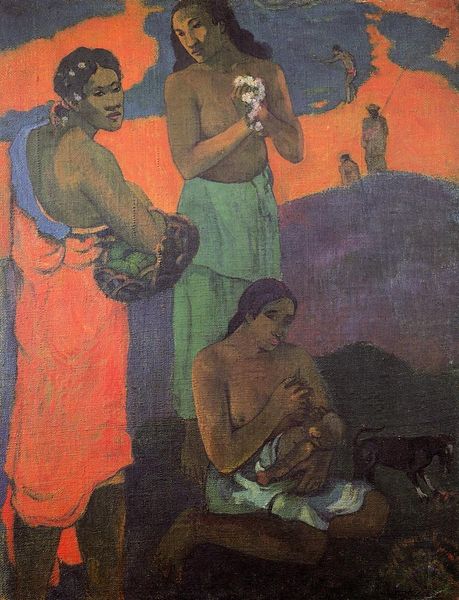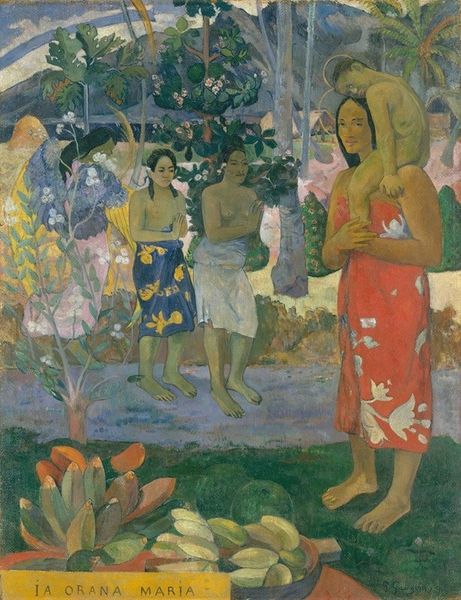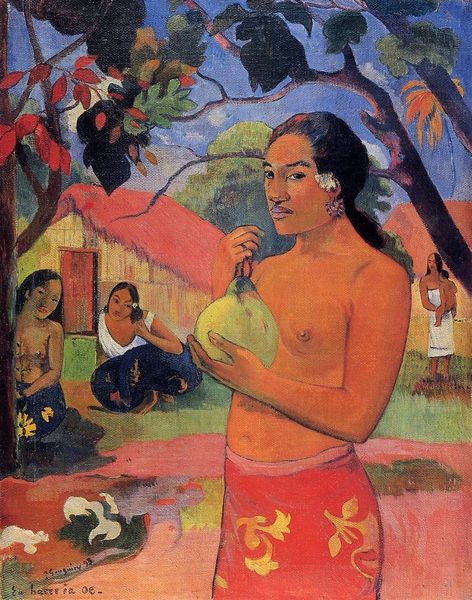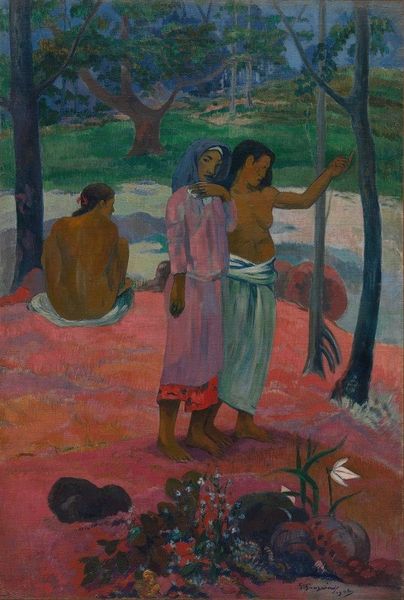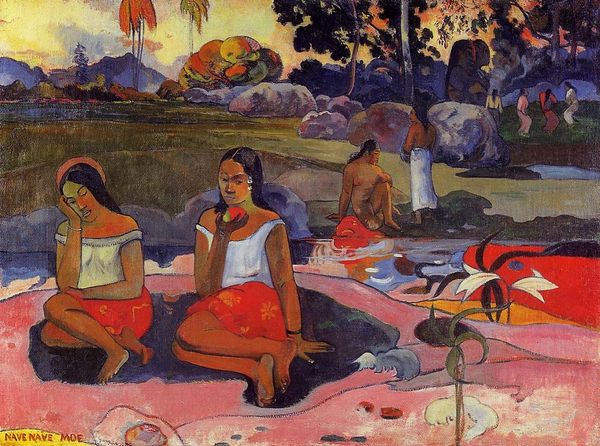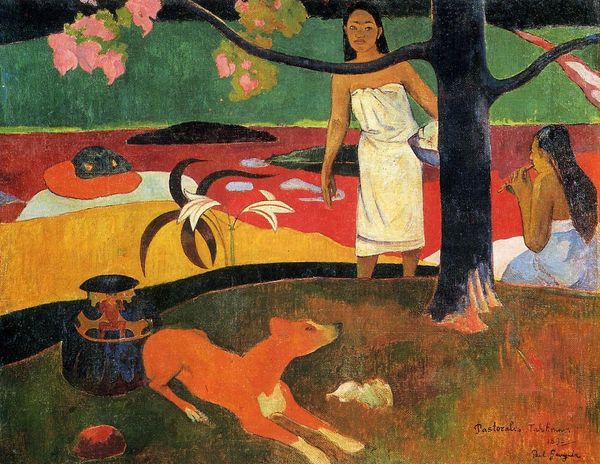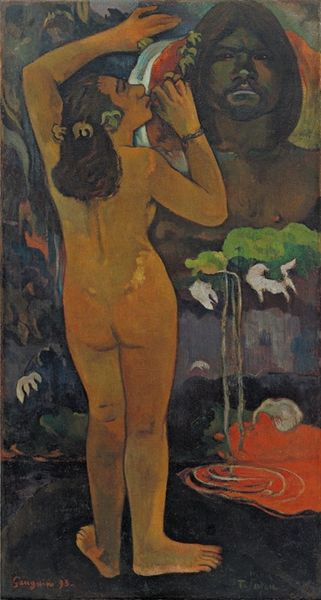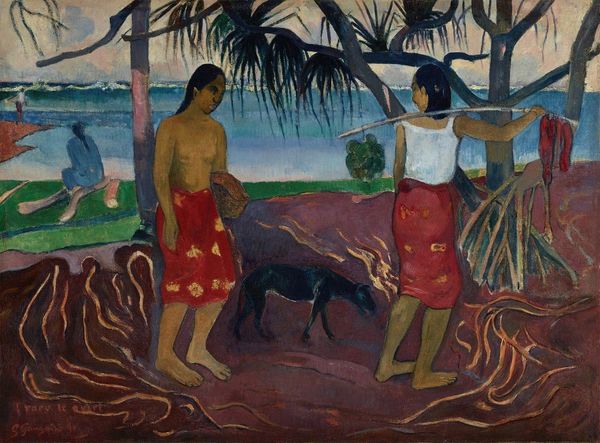
oil-paint
#
figurative
#
oil-paint
#
landscape
#
figuration
#
oil painting
#
orientalism
#
symbolism
#
history-painting
#
post-impressionism
Copyright: Public Domain: Artvee
Paul Gauguin made Arearea with oil on canvas, during his time in Tahiti. Gauguin’s technique was critical to his project. By using oil paint thinned with turpentine, he gave the surface a deliberately matte effect, almost like a fresco or a painted textile. This was very different from the heavily worked surfaces that defined European painting at the time. He sought to capture what he saw as the essence of Tahitian life. Oil paint was a quintessential medium of the Western art tradition; Gauguin used it to portray a culture far removed from European values. His flat planes of colour, bold outlines, and simplified forms reflect an engagement with Japanese prints and other non-Western traditions. This interest aligns him with the wider Arts and Crafts movement, which questioned the dominance of industrial production. Ultimately, Gauguin used traditional fine art materials in a way that challenged the very definition of fine art. He sought to collapse the distinction between the high art of the European tradition, and the perceived simplicity of craft traditions elsewhere.
Comments
No comments
Be the first to comment and join the conversation on the ultimate creative platform.

